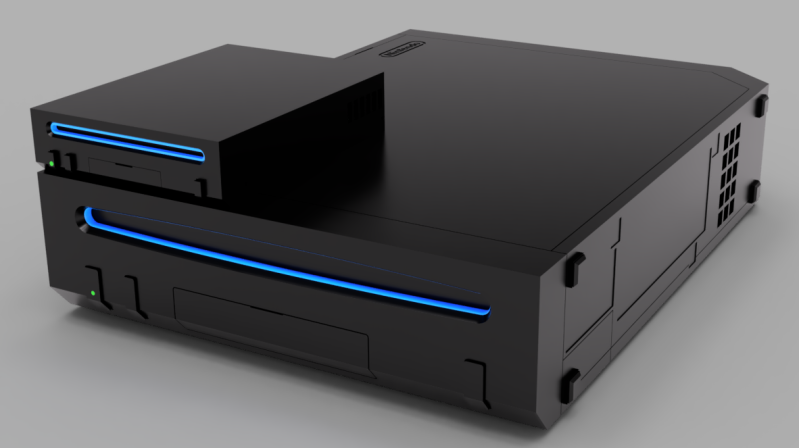The Nintendo Wii was never a large console. Indeed, it was smaller than both the Xbox 360, PlayStation 3, and most consoles of previous generations, too. That’s not to say it couldn’t be smaller, though. [loopj] has built what is perhaps the smallest Wii yet, which measures roughly the same size as a deck of cards. The best bit? The housing is even to scale!
There’s no emulation jiggery-pokery here. This build uses an original Wii motherboard that’s been cut down to the bare basics. Measuring just 62 mm by 62 mm, it features the CPU, GPU, RAM, and flash memory, while most of the extraneous hardware has been eliminated. Power and data is provided to the board from a special Wii Power Strip PCB, while the Periphlex flex PCB handles breaking out controller interfaces. Indeed, the build is nicknamed Short Stack as it’s built from a number of specialist PCBs for builds like this one. It also uses two boards designed by [YveltalGriffin] — the fujiflex for HDMI video output and the nandFlex to handle the Wii’s NAND memory chip.
[loopj] also had to design two further PCBs specifically for this build. One handles power, the micro SD card, HDMI connector, and controller ports. Meanwhile, the second handles the power, reset, and sync buttons along with status LEDs. Another neat hack of [loopj]’s own devising is using TRRS connectors in place of the original bulky GameCube controller ports.
Ultimately, it’s volume is just 7.4% that of an original Nintendo Wii. It’s probably possible to go smaller, too, says [loopj], so don’t expect things to end here. We’ve seen some other great Wii mods before, too, like this excellent handheld design.

















So, a wee Wii?
A piddle?
Wheee!
Wheely!
I pictured Mini me playing on a Tiny Wii
kudos! Shrinking the original Wii to this size is the work of a true genius. (or geniuses, according to the “special thanks” section)
I’ve never understood that fetish (shrinking things for no apparent reason, making them worse to operate).
But if it makes those people happy.. 🤷♂️🙂
I think it connects more with “reducing the used space to the absolute minimum necessary” kind of think, and I get it. I mean, why make it unnecessarily bigger when you could have made it smaller?
The smaller you make something the higher the watts/unit volume that you then need to dissipate. This nearly always means an annoying noisy much higher RPM fan, to keep the same Mean Time Between Failure. The MTBF will, on average, will double if the normal operating temperature is lowered 10 degrees Celsius (18F) – lookup “Arrhenius Equation”. And the reverse is also true, the MTBF will half every 10 degrees Celsius (18F) higher the operating normal temperature.
Will you be able to use the same disk in them. the same games
But then why are TVs getting bigger and bigger?
A tiny console next to it seems weird to me.
Immersion.
I don’t see how this is worse to operate.
At some point, it seems like it would be easier to just redesign the main board and move the custom chips to it. Moving BGA chips is not so difficult these days, with appropriate equipment and practice.
https://bitbuilt.net/forums/index.php?threads/nintendo-vegas.5052/
Nice, sad to read about his issues losing the CPU during reflow.
Also curious about the chinese project with a new PCB.
What!?! No appropriately scaled credit card size CDRom drive? Lazy.
Looks good!